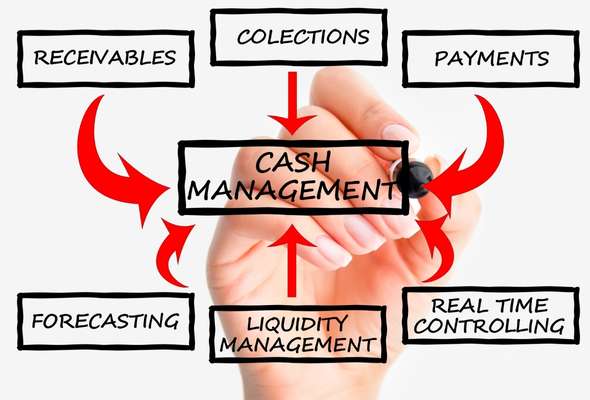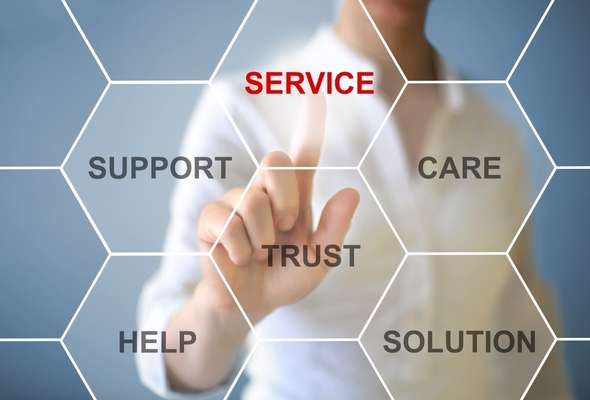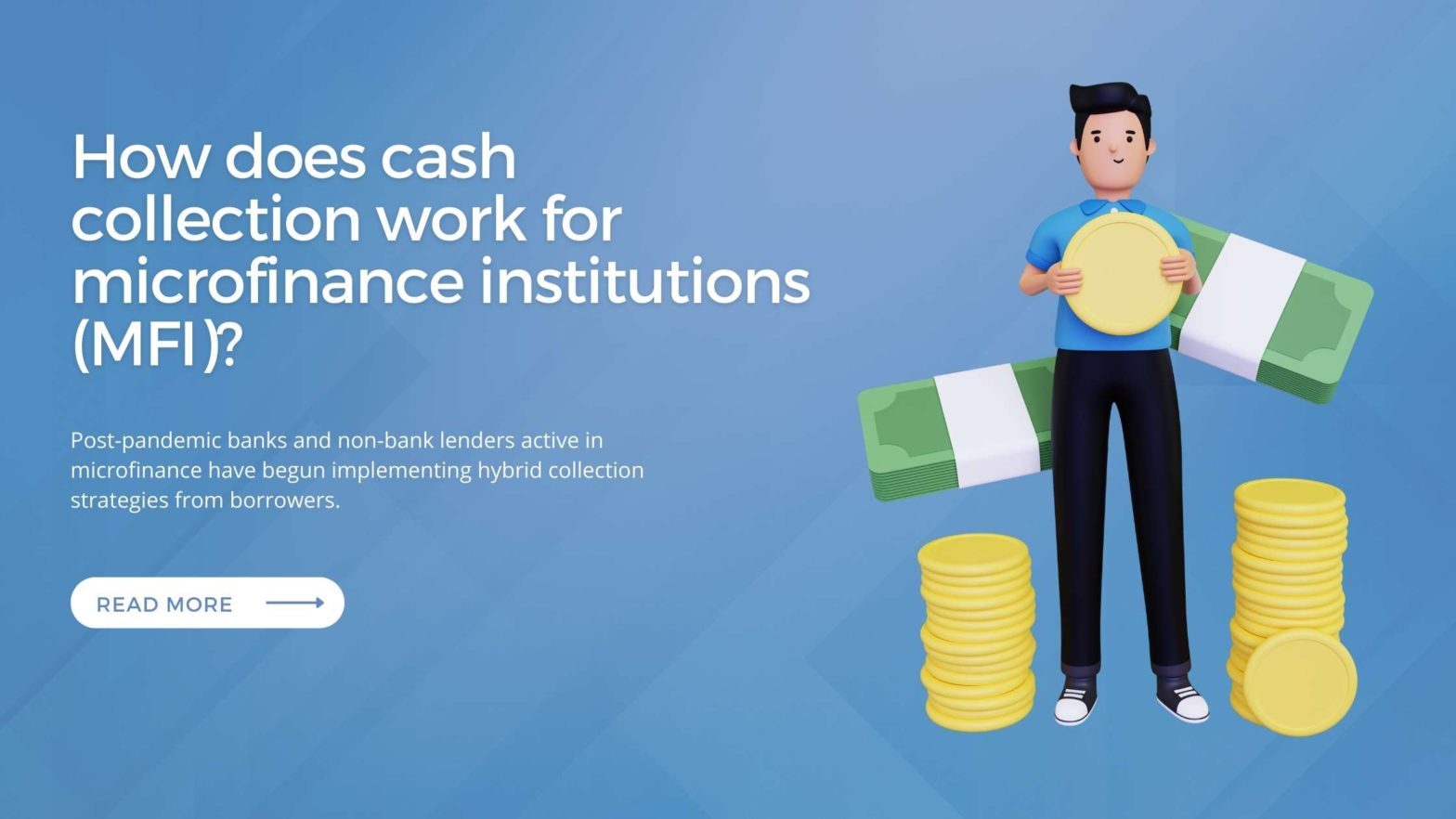
How Does Cash Collection Work for Microfinance Institutions (MFI)?
Post-pandemic banks and non-bank lenders active in microfinance have begun implementing hybrid collection strategies from borrowers. To minimize process disturbances, they are attempting to combine physical and digital collection modalities. As a result, cash collections work differently for MFIs depending on the type of loan undertaken.
Due to the comfort level of the primary borrower base in making cash payments, repayments in the microfinance sector have historically been made in group meetings.
Microfinance has played a significant role in India’s financial status. By offering microcredit, MFIs (Microfinance Institutions) significantly contribute to promoting inclusive growth for low-and middle-income populations without access to formal finance.
Loan collection needs to be considered for any financial institution. They must work per the guidelines, ensuring the debtor faces no problems.
Table of Contents
What are microfinance and the types of institutions?
Financial firms, and microfinance institutions (MFIs), offer small loans to those without access to banking services. The term “small loans” has different meanings in different nations. All loans in India that are less than Rs. 1 lakh can be categorized as microloans. There are three different types of microfinance institutions offering microfinance:
- Credit Unions
- Non-Governmental Organizations
- Commercial Banks
What are the goals of microfinance institutions?
In recent years, microfinance institutions have grown in popularity and are increasingly viewed as useful tools for reducing poverty. Most MFIs have excellent track records and are profitable since they have effective loan repayment methods, while others are pretty self-sufficient. The following are the main objectives of microfinance institutions:
- Become a financial organization that supports the creation of sustainable communities.
- Aid in the distribution of resources that assist the socially disadvantaged. In this sense, women are given special attention because they have successfully started businesses that generate money.
- Consider the possibilities for accelerating the end of poverty.
- Create possibilities for the poor to work for themselves.
- Empowering rural residents by teaching them basic skills would enable them to launch income-generating ventures.
Let us check the different ways of improving cash collections in microfinance institutions:
Microcredit
One of the most effective methods for reducing poverty is microfinance, which offers tiny financial products. It also includes helping the impoverished in rural, semi-urban, and metropolitan areas to aid in their upliftment and improve their standard of living. Microcredit has been characterized as the provision of thrift, credit, and other financial services and goods in a minimal quantity. The RBI’s NBFC-MFI license is what allows MFIs to operate in India.
Collections

Individual and group loans with set repayment terms are frequently available from microfinance institutions. Depending on the plan and the institutions, the loan repayments could be weekly, monthly, or biweekly. A compelling collection strategy keeps MFIs’ goodwill with the borrowers while enabling them to convert receivables into liquid assets as rapidly as possible. In addition, microfinance institutions put down different cash collection options, helping debtors to repay easily
Digital Penetration
Market experts believe that the best way to help MFIs with collections is by teaching borrowers about making on-time payments and giving them the option to do it digitally. Thanks to the widespread use of smartphones and the reach of the mobile internet in India, every user can easily access digital apps. There are multiple apps available for loan repayment and receiving.
One could compare the repayment of the loan to paying any utility bill (such as an electricity bill or a mobile recharge bill), most of which have already gone digital thanks to India’s interoperable bill payment network. In addition, MFIs can help users know and learn which app is the best.
Loan Collection Using Apps
Using apps for loan collection is the best way. Some schemes are run by NPCI, following the guidelines set by the financial authorities. It connects all payment service providers to utility providers for easy payment options. Service Providers like MIMOIQ also provide the best platform that helps microfinance institutes with cash collection. For instance, MIMOIQ includes all the utility bill payment services available through online “agents” like Google Pay, BHIM UPI, and Amazon Pay.
Loan repayments by these microfinance institutions can be simplified using UPI payment apps such as PhonePe and Google Pay. The client pays the outstanding loan balance by displaying their customer identification number. The process acts as a self-serve model, and to complete the transaction, the borrower would need to be provided with contextual knowledge via SMS and WhatsApp.
Using Trusted Cash Collection Service
Along with UPI, companies can also use reliable cash collection services. As mentioned, MIMOIQ is the leading cash collection service. You may increase your cash flow by using MIMO Cash Collection Service to handle your cash management requirements and protect your cash deposits. MIMO provides a user-friendly solution that meets all your cash-related needs, from cash deposition to e-money transfer. In addition, the risk of improper cash handling and stealing is reduced because qualified specialists manage the whole collection and deposit procedure.

Financial Literacy on Repayments
Regarding cash collections or repayments, it is essential to have literacy on repayments. It is the responsibility of MFIs to inform borrowers of the risks of postponing payments through a variety of channels and to encourage them to make on-time payments whenever possible.
Along with this information, it is essential to provide simple DIY payment instructions for using UPI apps to make loan payments. Most households utilize the three most popular communication channels: SMS, WhatsApp, and IVR.
Different Groups by Microfinance Institutions for Loan Collections
The Joint Liability Group (JLG)
This informal club, typically of 4–10 people, looks for loans with mutual guarantees. Usually, the loans are used for farming or closely related activities. This group of borrowers includes tenants, farmers, and rural employees. In this JLG, everyone shares equal responsibility for prompt debt payback.
Self-Help Centers (SHG)
This self-help group consists of people from comparable socioeconomic backgrounds. These small business owners band together for a brief time and establish a shared fund for their operational requirements. These organizations fall under the category of non-profits. In addition, the group handles the collection of debt. In this type of cooperative loan, collateral is not necessary.
Bank Grameen Model
Prof. Muhammad Yunus, a Nobel Prize winner, developed the Grameen Model in Bangladesh during the 1970s. In India, Regional Rural Banks (RRBs) were founded. The complete growth of the rural economy is the main goal of this system.
Rural Cooperatives
In India, rural cooperatives were created after the country gained freedom. Poor people’s resources were combined, and this fund was used to provide financial services. Although this system had intricate monitoring protocols, it exclusively benefited creditworthy customers in rural India.
Being Digitized with Professional Service
A lot of MFIs still maintain records on paper. Digitizing all data is the best way to overcome the problem of cash collections. MFIs should prioritize investing in data management systems so they can begin collecting data in the future rather than getting bogged down with digitizing outdated data. One should prioritize figuring out how to organize data to be valuable, effectively, and reliably collected online. The old data being digitized is a plus. MIMOIQ is the ideal platform MFIs can use for loan repayment.
Like this article?
More To Explore

What Factors Should Organizations Consider Before Outsourcing Their Internal Audit Functions?
+91 1141182211 Outsourcing has become a strategic choice for many organizations looking to streamline operations, reduce costs, and enhance efficiency.

Outsourcing Internal Audit: Evaluating the Upsides and Downsides for Your Organization
+91 1141182211 In today’s dynamic business environment, companies face increasing pressure to enhance efficiency, manage risks effectively, and ensure compliance

A Background Verification Guide: Frequently Asked Questions and Their Answers
+91 1141182211 Background verification (BGV) is a crucial process used by employers to ensure they are hiring candidates with accurate

